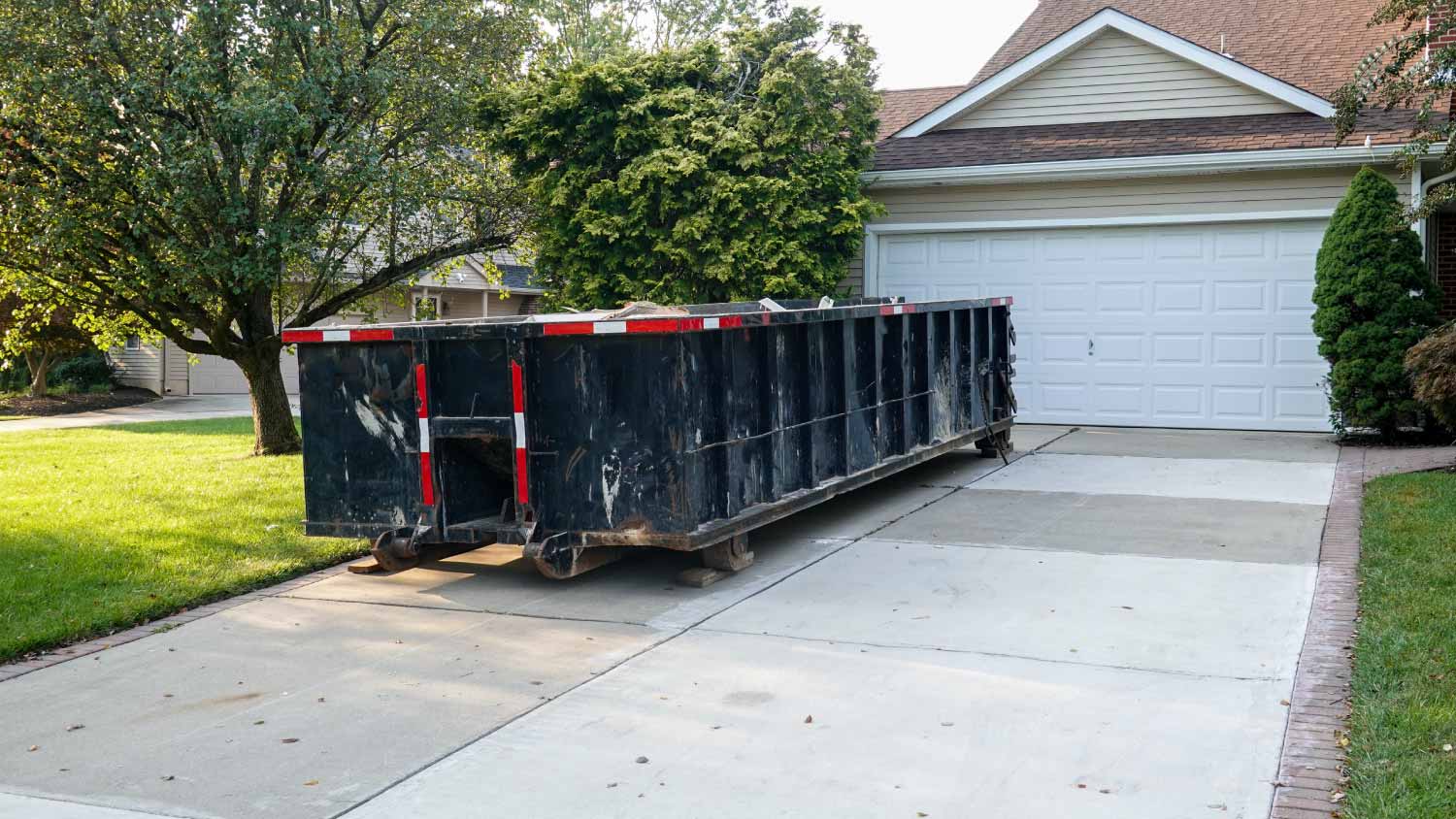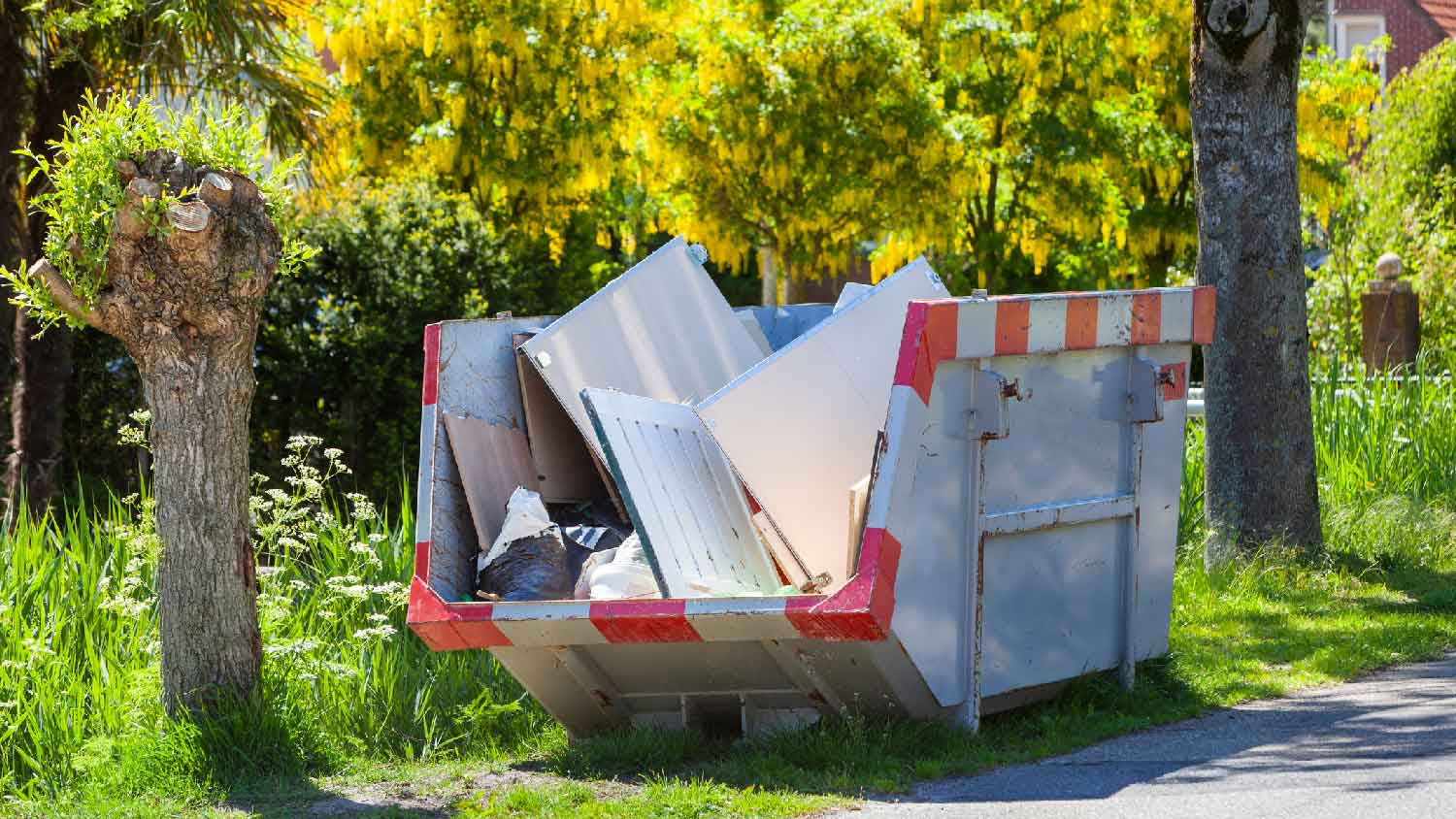Tips for Picking the Right Dumpster Placement
Even dumpsters need matchmakers


There are three main dumpster placement options—the street, your front lawn, or your driveway.
It’s important to make sure the dumpster placement you choose is accessible and a safe distance from structures.
Factors such as what and how much you’re disposing of will be a determining factor for dumpster placement.
Whether you’re moving and need to get rid of some old things, recently completed a home project and have supply remnants hanging around, or are simply doing a junk cleanout, renting a dumpster can help simplify this process and ensure everything is disposed of properly.
That being said, there are some logistics to consider, such as the cost to rent a dumpster, what size you need, and where to place it. In this article, we’ll provide some tips to ensure getting rid of your garbage and junk is easy.
What Are the Placement Options?
There are three placement options for dumpsters: the street, your front lawn, or your driveway. Before you contact a dumpster rental near you, consider the following tips to help you choose the right placement option for your project.
Tips for Picking the Right Dumpster Placement

Placing a dumpster in the best spot for your project and situation helps the process go smoothly. Here’s what you need to know before you get your dumpster delivered.
Make It Easily Accessible
Put the dumpster near where you’re doing the removal—this limits walking distance and the energy you spend doing the removal. For instance, if you’re hauling things from your backyard, you may want to have the dumpster rental company place the dumpster back there. However, the grass underneath the dumpster will die if covered too long, so this is only ideal for quick projects.
Consider What Size You Need
Knowing what size dumpster you need can help you determine where to place it. Smaller dumpsters are easier to maneuver, so you can put them in most places on your property. Larger dumpsters are much more unwieldy, and the removal company may require you to keep them in your driveway or on the street.
Consider What You’re Disposing Of
It’s key to know what you can put in a dumpster rental as well as what items can’t go in a dumpster rental. Once you know this, you should have a clear idea of what exactly you’ll be putting into the dumpster. If the items are heavy and cumbersome, you’ll want to put it in a place that limits your trek with the items.
Keep It a Safe Distance from Structures
Dumpsters should be placed at least six feet away from structures such as windows, doors, and electrical poles. Keeping dumpsters a safe distance from other buildings and structures adds an extra layer of protection should anything go wrong.
Look Into Permits
Most of the time, you need a permit for a dumpster, and where you put your dumpster can affect what kind of permit you need. The type of permit you’re able to get may determine whether you want to opt for an alternative placement to your original plan.
Frequently Asked Questions
To get the most out of your dumpster rental, regardless of its placement, you should review what you can put in it and strategically organize your disposal. For instance, putting large items on the bottom helps you save space when it comes to the little stuff at the end of the project.
To calculate how many dumpsters you need for your disposal project, take a close look at the number of items you’ll be disposing of and estimate or measure the total in cubic yards. From there, you can have the dumpster rental company inform you of their dumpsters’ capacities to determine how many you need.





- What Size Dumpster Do I Need?
- 6 Signs of a Reputable Dumpster Rental Service
- What Can You Put in a Dumpster Rental?
- Do You Need a Permit for a Dumpster Rental?
- What Items Cannot Be Placed Into a Dumpster?
- Junk Removal vs. Dumpster Rental: Which Should You Choose?
- What Is a Roll-Off Dumpster? Pros, Cons, and How It’s Used
- 9 Junk Removal Tips to Make Your Next Cleanup Easier
- How to Find and Hire a Junk Removal Company
- Who Can Haul My Junk Away?










